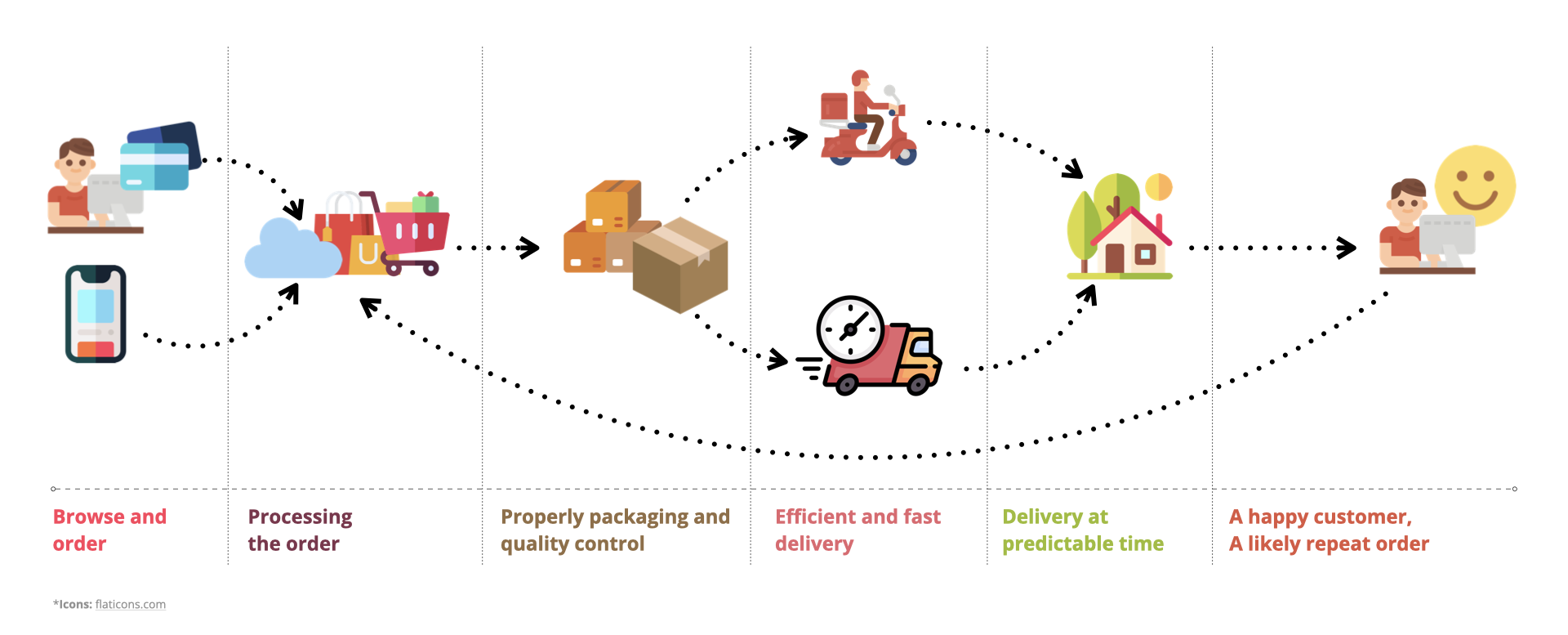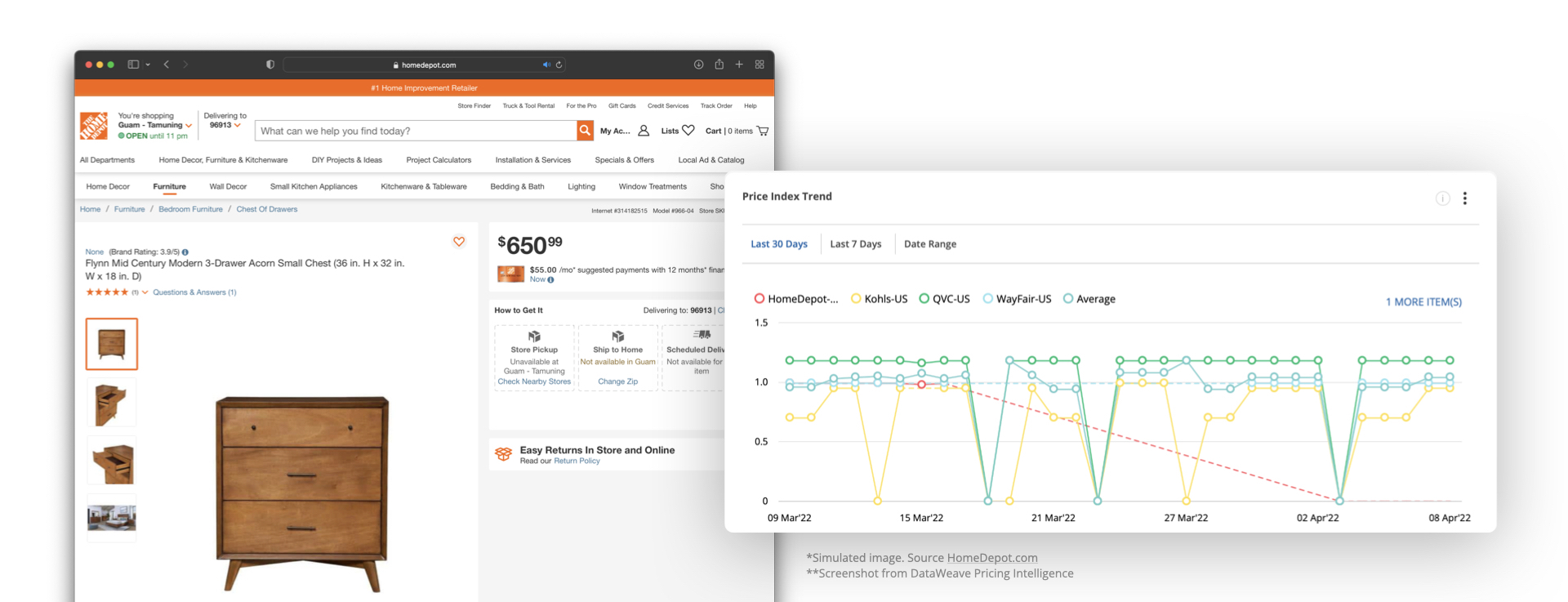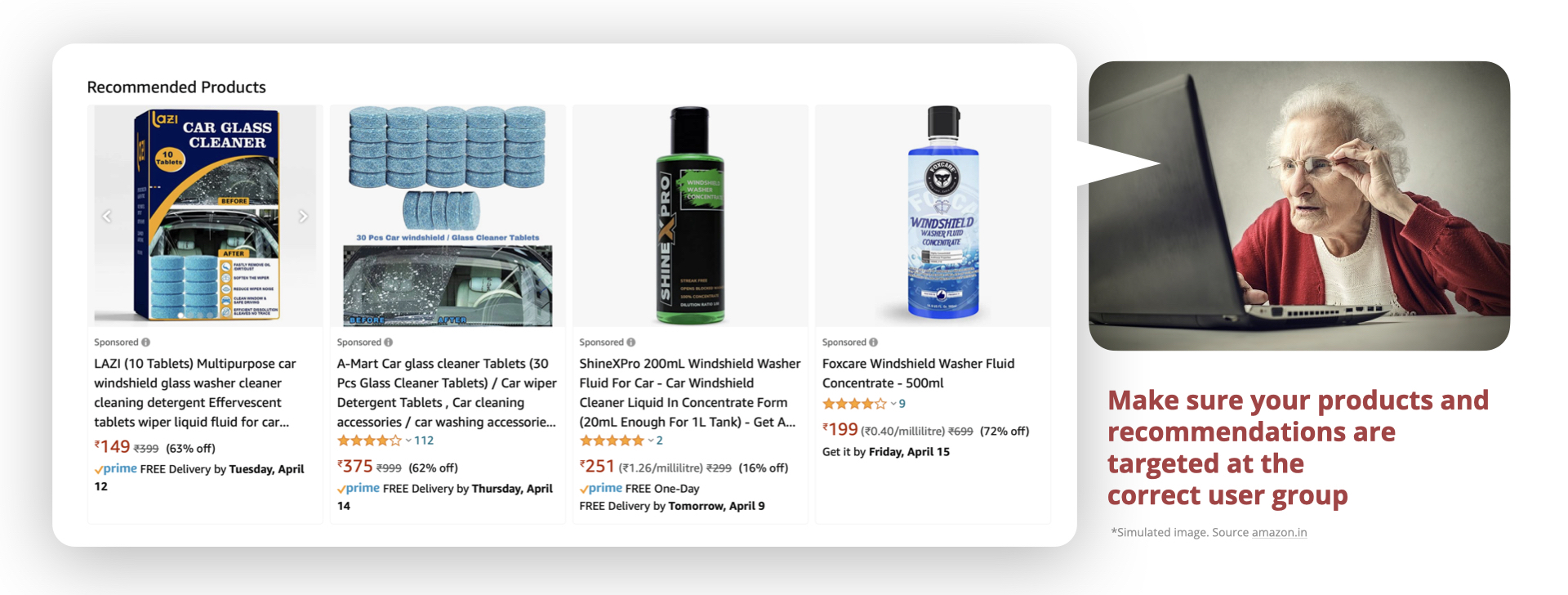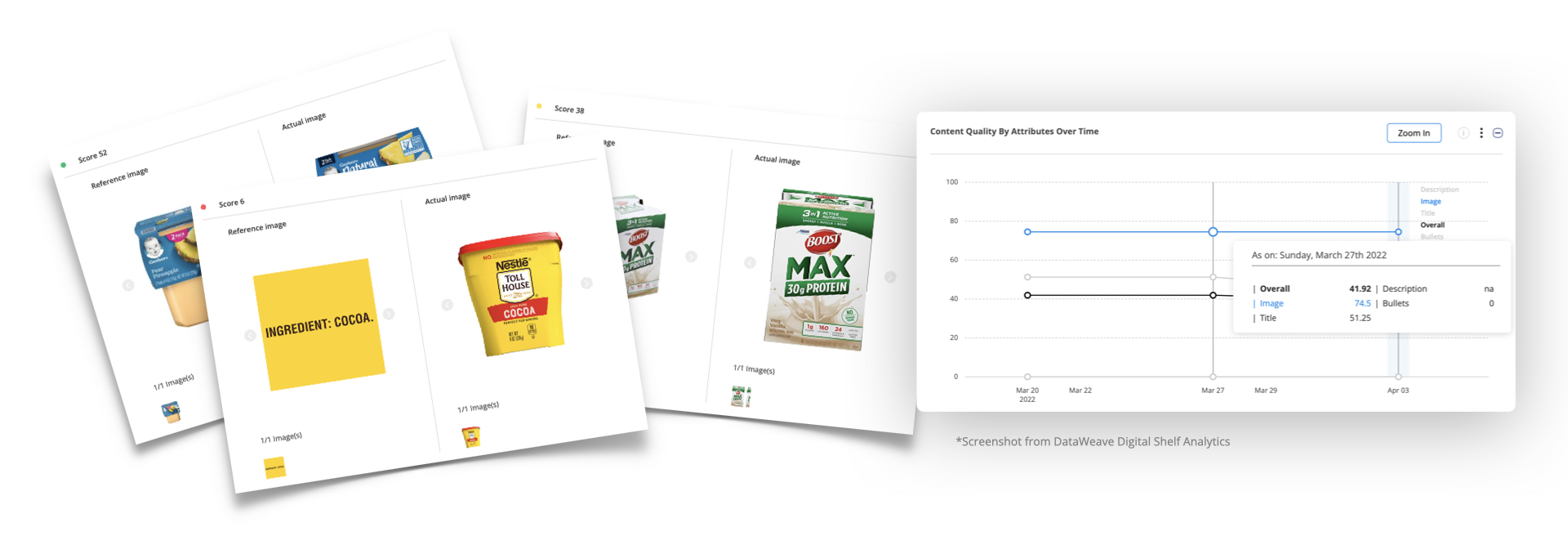No matter where your eCommerce business sells, there are some fundamentals that brands have to get right to achieve sales targets. Brands need to find the right product/market fit, nail their lead acquisition strategy, and design a qualified sales funnel to turn prospects into leads and eventually returning customers. They will also have to analyze their customer’s buying journey and get insights into competitors’ strategies to understand what works for their business.
If your eCommerce business is struggling, read this blog to learn about steps you can take to increase sales and keep your business afloat.
1. Lack of social proof
Customers often check for reviews or testimonials before making a purchase. Our decisions are consciously or unconsciously influenced by the opinions, choices, and actions of people around us. Social proof helps brands build customer trust, adds credibility to their business, improves brand presence, and validates customers’ buying decisions. 92% of consumers are more likely to trust user-generated content (UGC) and non-paid recommendations than any other type of advertising. Additionally, brands should also find ways to combat negative reviews since bad reviews can sometimes be extremely damaging.
Understanding these reviews or the impact of your brand’s social proof is critical. At DataWeave, we help brands analyze online reviews to understand customer sentiment and adapt to feedback to enhance their experience with your brand.
2. Slow site speed
Site speed of the home page and checkout page on your D2C website can be a roadblock. Slow sections on your site like My Accounts, checkout, and cart are often overlooked when it comes to tracking site speed. Brands should run their checkout process at least once a month to ensure it’s fast, smooth, and bug-free. You can optimize images, strip unused scripts, implement HTTP/2, etc., to improve site speed and performance.
3. Poor customer service
69% of US consumers say customer service is very important when it comes to their loyalty to a brand. Guaranteeing a return customer is important to maintaining customer loyalty. While the focus is on the first purchase for new customers, your brand’s customer service will determine if first-time customers become repeat buyers. Loyal customers are known to spend 67% more on a brand product than new customers, even if they make up only 20% of your audience.

4. Failure to send traffic to popular products
Be it your own D2C website, or when selling on a marketplace, you should be able to drive traffic to your best-selling products. One of the best ways for sending traffic to popular products on your website is to run paid ad campaigns and reach new audiences with influencer marketing on social media. Brands can also attract customers with organic media such as writing blogs and producing podcasts.
If you’re looking at driving traffic to key products on Amazon & other such marketplaces, sponsored ads are the way to go! Sponsored ads help your best-selling products more discoverable & helps shoppers find your brand with ease.
5. Inadequate pricing
Finding the right pricing strategy for your eCommerce business is crucial for optimizing sales and increasing revenue. The first step is to perform a competitor and historical data analysis to get a general idea of the market and then develop a pricing strategy that is the right fit for your products. Brands also have to ensure that they have dynamic pricing that can adjust according to supply and demand.
Our Digital Shelf solution at DataWeave helps brands track pricing for products across different pack sizes & variants across multiple online retailers and marketplaces helping them stay competitive in the market.

6. Not targeting the right audience
One of the biggest mistakes that eCommerce businesses can make is targeting the wrong audience. It’s crucial for brands to define that target audience and then tailor products and marketing toward them. To increase sales as an eCommerce business, brands have to understand their audience, their interests, and how to appeal to their interest. Start by creating ideal buyer personas that represent your ideal customers. Also, segmenting audiences and targeting various groups based on buyer personas for ad campaigns will lead to better sales and revenue.

7. Poor product descriptions
One of the major and common mistakes by eCommerce brands is using irrelevant product descriptions that are not optimized for the product. Customers don’t add products to their cart if they have difficulty finding sufficient information relevant to the product. Brands should write attention-grabbing descriptions optimized for SEO that are informative for the users. Here are some tips to optimize content to drive more eCommerce sales.
At DataWeave, our AI-Powered solution helps brands optimize content and visuals across product pages to improve discoverability.
8. Not having multiple revenue streams
Due to COVID-19, many businesses have had to modify or temporarily shut down their daily operations. However, finding new revenue streams can be a great way for eCommerce businesses to make up for the lost income and keep the company afloat. The best solution is to diversify your product offerings by offering commonly purchased products in bundles.
9. Low-quality visuals
Businesses fail to hit their sales targets because of low-quality visuals in product descriptions. High-quality and custom images can improve conversion rates from both marketplaces and image-based channels like social media. Social media users are attracted to exciting, high-quality content that conveys a desirable lifestyle. Brands should use high-resolution, attractive pictures of their products. Brands can also utilize UGC and influencers to help build up their content libraries.

10. Wrong Assortment. Poor Availability
When your target audience lands on your eCommerce store and cannot find what they’re looking for, it leads to a poor shopping experience, but more importantly a lost sale for your brand! While you cannot have endless inventory, it’s essential to optimize your assortment & product availability to decrease the chances of your customer walking away. Assortment & availability optimization begins with analyzing current and historical inventory trends. If done manually, assortment can be a time-consuming task. A healthy assortment can increase retail sales by creating a positive shopping experience for your customers and encouraging them to return to your store again.
11. Bad eCommerce UX
Offering a sub-standard user experience is a common reason why eCommerce businesses find it difficult to increase sales. According to a study, the conversions can fall by up to 7% for every one-second delay in page load time. Businesses can use a countdown clock on their landing page and exit pop-ups to improve conversations. Your landing page and product descriptions should provide information that helps your users make a better and more informed decision.
Conclusion
If your eCommerce’s business sales are tanking, improving site speed, customer service, social proof, and product descriptions are some of the levers you can pull to remedy the situation. Brands should also work on improving online reviews & ratings, availability, assortment, visuals, and website UX to improve customer experience. These steps not only increase loyalty but also improve customer retention.
Need help tracking online pricing for your eCommerce business? Or decoding customer sentiment from reviews they’ve left for your products? Or do you need insights into your product assortment and availability? Sign up for a demo with our team to know how DataWeave can help!
